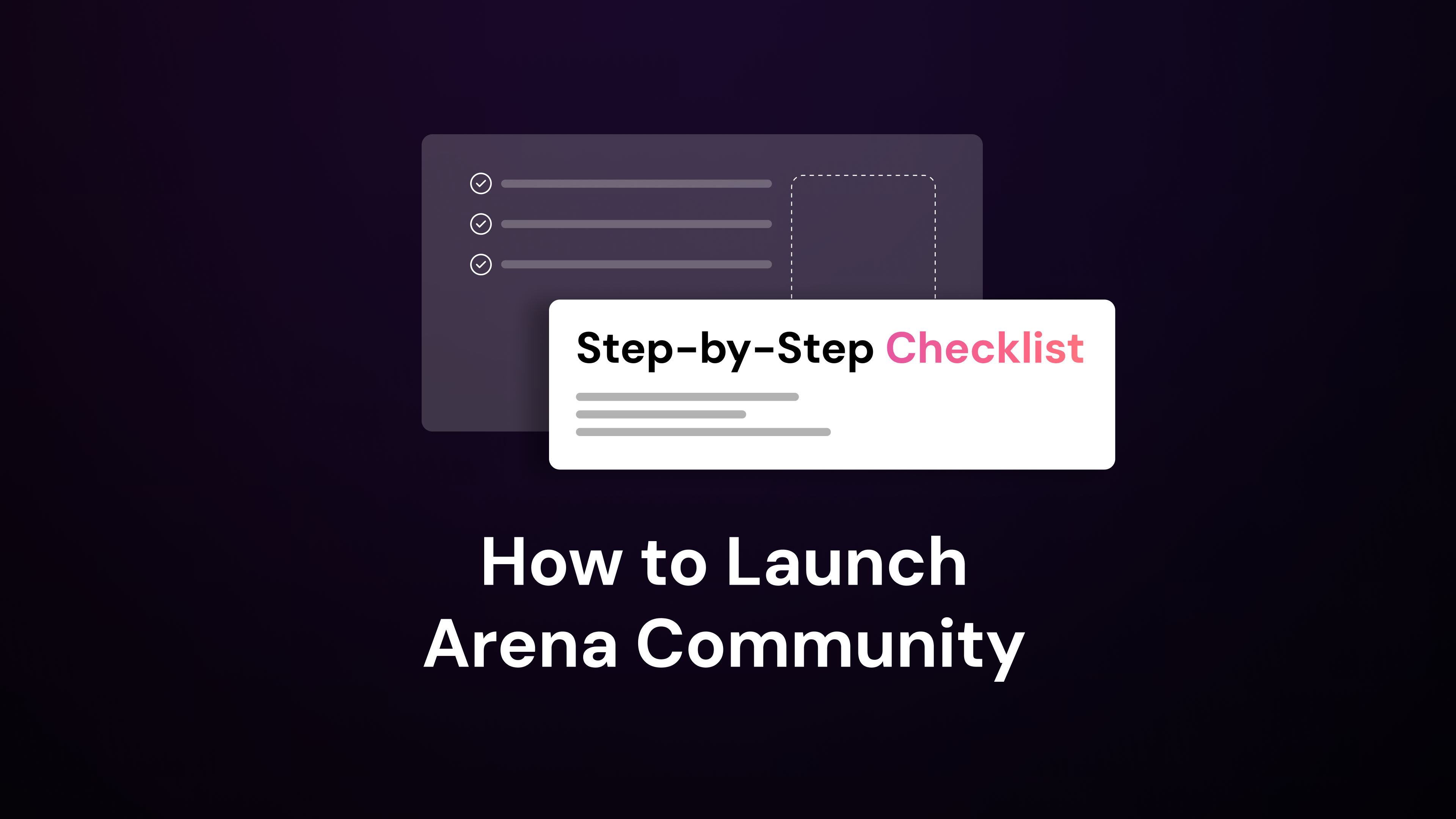Mastering the best practices of brand community marketing is important for building lasting relationships and boosting engagement beyond traditional social media platforms.
Connecting with your audience is more important than ever. Building thriving online communities is a powerful strategy that unites customers with shared interests in your brand, products, and values.
Benefits of Brand Community Marketing for Businesses and Customers
For businesses, a thriving brand community, built through effective customer engagement strategies, can lead to:
- Increased Customer Loyalty: Engaged community members are more likely to become repeat customers and brand advocates.
- Valuable Insights: Direct interactions with your audience provide feedback for product development and marketing strategies.
- User-Generated Content: Encouraging members to share experiences generates authentic content that resonates with potential customers.
- Cost Savings: Peer-to-peer support within the community can reduce customer service costs.
For customers, participating in a brand community offers:
- A Sense of Belonging: Members connect with others who share similar interests and values.
- Exclusive Access: Communities often provide early access to new products, events, or special promotions.
- Influence: Customers can share feedback and contribute to the brand’s growth.
Examples of Successful Brand Communities
Several brands have effectively built strong communities:
- Gymshark: Offers fitness tutorials and exercises, fostering a supportive community for fitness enthusiasts.
- Starbucks: Through rewards programs and customer stories, Starbucks creates a sense of belonging and encourages user-generated content.
- Peloton: An online community that brings users together to share fitness journeys, providing motivation and peer support.
- LEGO Ideas: Allows fans to submit designs, with community voting to turn ideas into official products.
These successful online communities demonstrate how nurturing a brand community can increase engagement and customer loyalty.
1. Engage Your Community With Content Marketing
An engaged community is the heart of a successful brand. Employing effective community growth tactics can enhance participation and loyalty.
Use Content Creation Strategies
Providing valuable content keeps your community interested. Regularly post educational, entertaining, and relevant material to motivate participation and sharing.
- Develop engaging content: Create blog posts, videos, or tutorials that resonate with your audience’s interests.
- Incorporate interactive features: Use polls, contests, or Q&A sessions to encourage active participation.
- Encourage user-generated content: Invite members to share stories, photos, or reviews, increasing engagement and trust.
Facilitate Conversations and Feedback
Creating a space where members feel heard and valued strengthens community bonds. Encourage conversations and actively seek feedback to enhance satisfaction.
- Foster interaction: Provide platforms for direct member communication.
- Encourage peer-to-peer engagement: Facilitate discussions for experience and advice sharing.
- Listen to feedback: Monitor discussions and respond promptly to questions or concerns.
- Act on suggestions: Implement user ideas to show value and turn users into brand advocates.
Organize Events and Activities
Events and activities deepen connections within your community, offering opportunities for interaction.
- Host virtual events: Organize webinars, workshops, or online meet-ups.
- Plan in-person gatherings: Arrange meet-ups or exclusive brand events.
- Create shared experiences: Facilitate activities to connect over common interests.
2. Measure and Adjust
Establishing a brand community is the first step; understanding its performance is important.
Decide on Key Metrics to Track
To gauge your brand community’s health and progress, focus on:
- Engagement Rate: Monitor likes, comments, shares, and posts.
- Growth Rate: Track the increase in community members over time.
- User-Generated Content: Measure content created by members.
- Customer Satisfaction: Assess satisfaction through surveys and feedback forms.
- Conversion Metrics: Track how community engagement translates into business outcomes.
Use Tools for Monitoring Community Engagement
Using the right tools can streamline your tracking efforts:
- Social Listening Platforms: Tools like Brandwatch or Hootsuite monitor conversations and sentiment.
- Community Management Software: Platforms like Arena provide real-time engagement tracking and analytics.
- Customer Data Platforms: Gather unified insights into customer interactions across channels.
- Analytics Tools: Use built-in analytics or tools like Google Analytics to track metrics.
Analyze Community Growth
Analyzing data helps you understand what’s working and what needs adjustment:
- Identify Trends: Look for patterns in engagement and growth.
- Gather Feedback: Use surveys to get direct input from members.
- Adjust Strategies: Refine content, engagement tactics, or community features based on insights.
- Measure Against Goals: Regularly compare metrics to community objectives.
3. Resort to User-Generated Content
User-generated content (UGC) plays a key role in building authentic connections within your brand community.
Encourage Customer Contributions
To motivate community contributions and enhance user-generated content, consider the following strategies:
- Invite Them to Share Experiences: Ask customers to post about their experiences using your products or services.
- Use Branded Hashtags: Create a unique hashtag for easy content sharing and highlighting.
- Offer Incentives: Reward contributions with exclusive discounts or recognition.
- Feature Interactive Campaigns: Run contests or challenges encouraging creativity.
Showcase Community Stories
Highlighting community-generated content strengthens connections:
- Share UGC on Official Channels: Feature customer content on your website, social media, or newsletters.
- Create a Dedicated Space: Establish a section for community stories and contributions.
- Acknowledge Contributors: Tag creators and express appreciation.
- Use UGC in Marketing Materials: Incorporate user-generated content to add authenticity.
Manage and Moderating Content
Effective moderation ensures a positive community environment and helps to maintain a safer community:
- Establish Clear Guidelines: Set community standards for acceptable behavior and content.
- Monitor Activity Regularly: Address issues promptly to maintain a respectful culture.
- Engage with Members: Respond to contributions and participate in discussions.
- Provide Support Channels: Offer ways to report inappropriate content or behaviors.
4. Tap Into Personalization and Customization
Creating a personalized experience for your community members increases engagement and loyalty by tailoring interactions to individual preferences.
Tailor Experiences for Members
Understanding your members’ needs is key to personalization. Conduct surveys and engage in direct conversations to gather insights. You can:
- Segment Your Audience: Group members based on behaviors or interests.
- Offer Personalized Content Recommendations: Suggest content that aligns with individual preferences.
- Create Exclusive Events or Groups: Provide specialized experiences for specific interests.
Use Data to Enhance Engagement
Using data is important for personalization. Track metrics like engagement rates and content preferences to:
- Identify Popular Topics and Formats: Focus on what engages your community most.
- Optimize Content Strategy: Refine your approach based on insights.
- Tailor Future Interactions: Anticipate member needs and interests.
Balance Privacy and Personalization
While personalization is important, respect members’ privacy by being transparent about data collection and usage, ensuring GDPR compliance. Ensure:
- Clear and Accessible Privacy Policies: Inform members about how their data is used.
- Member Control Over Personal Information: Allow members to manage their data.
- Ethical Data Collection: Comply with regulations and ethical standards.
Challenges and Solutions in Brand Community Marketing
Building a brand community comes with challenges.
Overcoming Initial Hurdles
Starting a brand community requires careful planning. Identify your target audience and research existing communities to learn how they interact. Define a clear value proposition to give potential members a compelling reason to join. Choose a platform that aligns with your audience’s preferences.
Dealing with Negative Feedback
Negative feedback is inevitable but valuable if managed correctly. Provide a platform for safe opinion sharing and listen actively. Allow community managers to handle comments professionally. Transparency and quick resolution reinforce trust.
Maintaining Community Interest Over Time
Sustain engagement with ongoing effort. Provide exclusive, valuable content regularly, and encourage user-generated content. Recognize and reward participation, host events, and seek feedback to adapt strategies to evolving needs.
Case Studies of Successful Brand Communities
Examining leading brands offers insights into successful communities.
1. Sephora: Fostering an Interactive Beauty Community
Sephora’s Beauty Insider platform encourages interaction by facilitating discussions, increasing engagement, and building trust.
2. Patagonia: Building Community Around Shared Values
Patagonia focuses on environmental activism, attracting like-minded consumers and building strong emotional connections.
3. IKEA: Creating a Sense of Belonging
IKEA’s “IKEA Family” program offers exclusive offers and events, strengthening customer relationships and encouraging repeat business.
Future Trends in Brand Community Marketing
Stay ahead of trends shaping brand community marketing.
Impact of Emerging Technologies
Emerging technologies are changing community engagement. Exploring new spaces like the metaverse and adapting to social commerce ensures seamless experiences.
Evolving Consumer Expectations
Consumers seek authenticity and meaningful connections. Addressing social isolation by creating online spaces helps meet evolving expectations.
Predictions for the Next Decade
Brand communities will continue growing in importance. Prioritizing authentic engagement and adapting to new technologies will foster stronger communities and drive growth.
By following these best practices, you can build an active brand community that increases engagement and loyalty and helps your brand succeed in the future.
Ready to see the impact of an effective brand community on your bottom line? Sign up now at Arena and start leveraging our powerful features to boost engagement and retention. Join thousands of brands that trust Arena to turn visitors into loyal customers.



